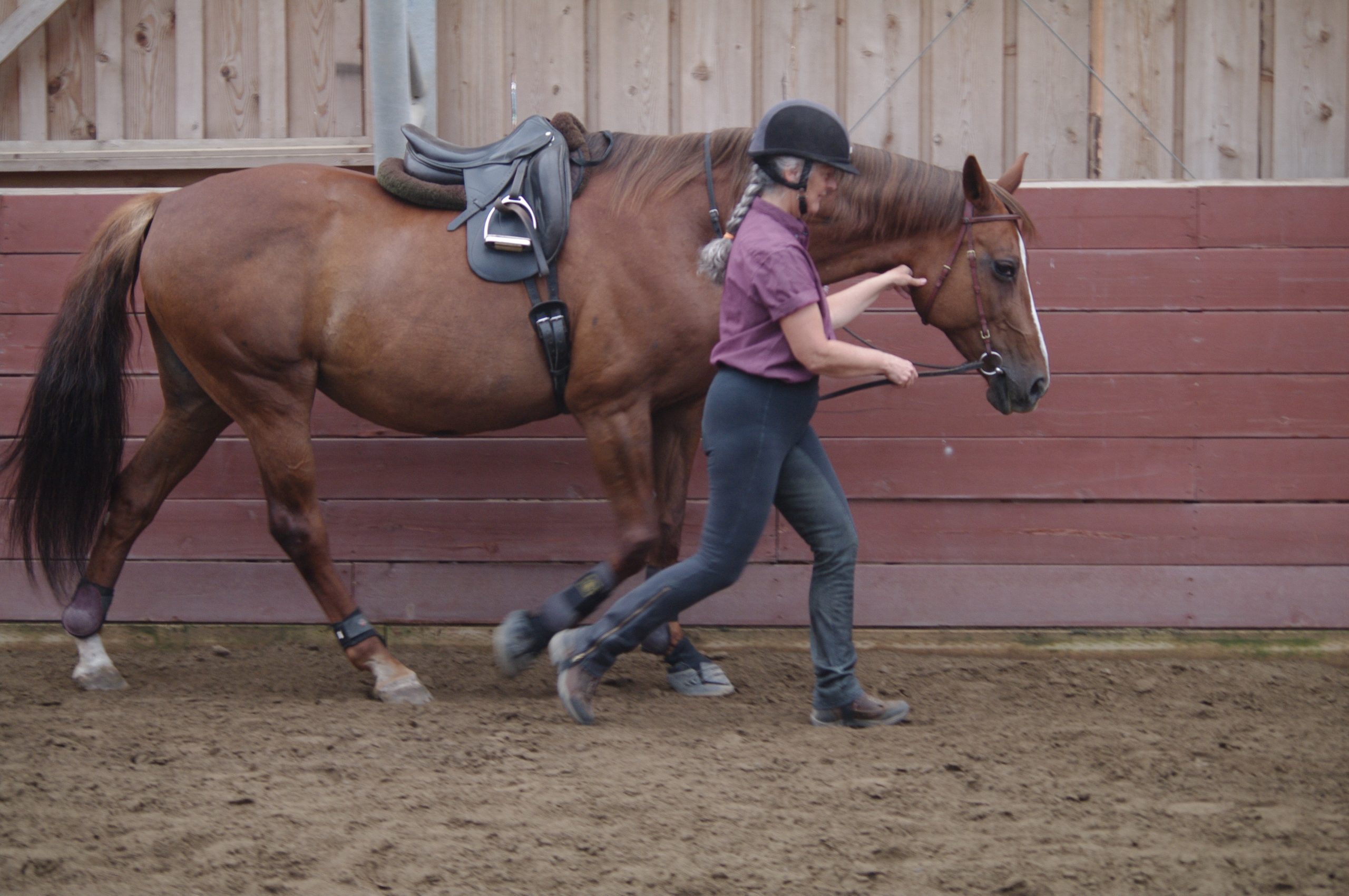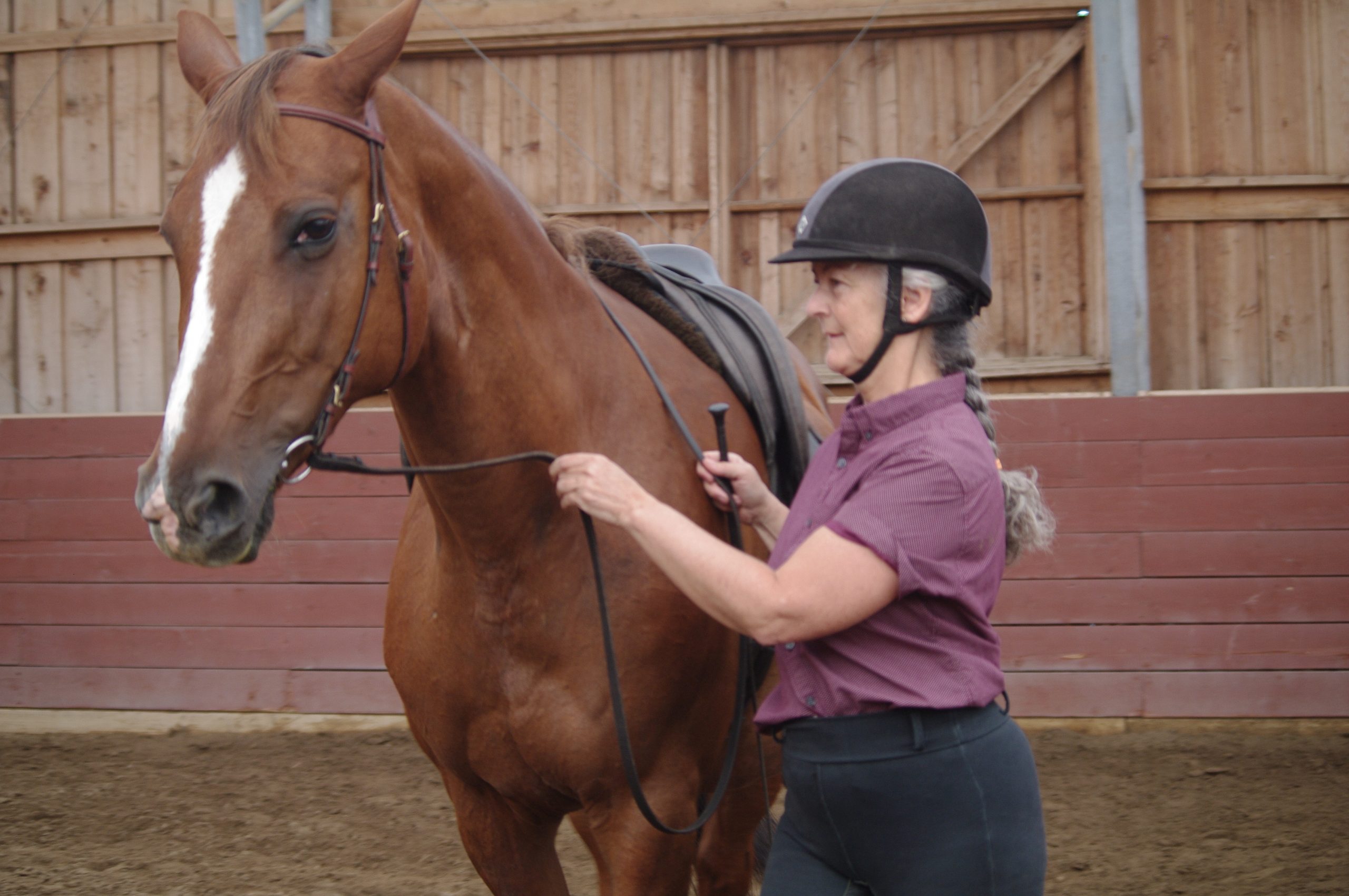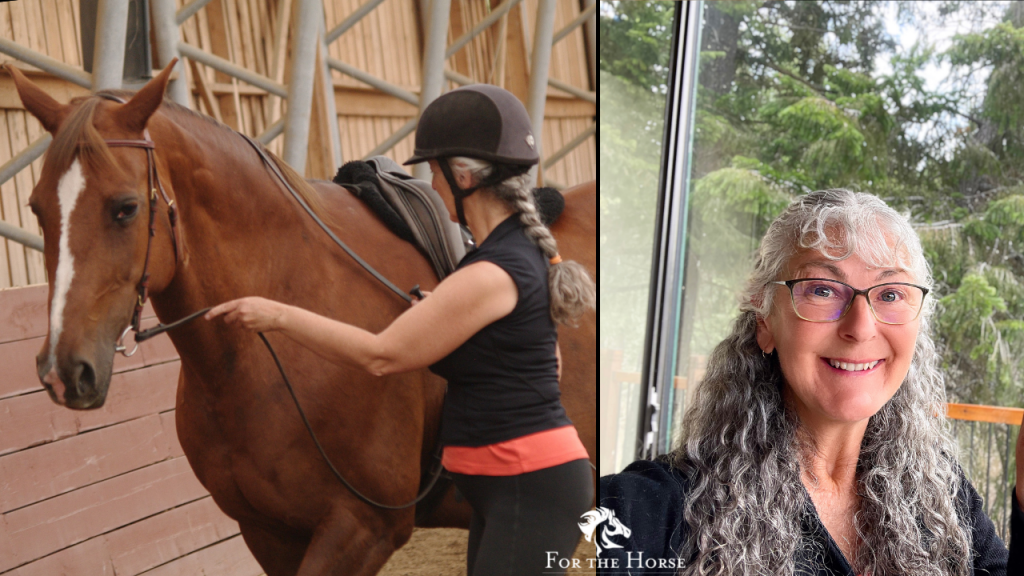In Hand horse training (In Hand ground work) is a place for you and your horse to problem solve, get to know each other better, and develop your skill set as an equestrian.
There are many objectives of In Hand horse training, here are just 3 situations where you can use In Hand ground work with your horse to constantly improve as a rider, even if you've had negative experiences in the past, and to transform your riding so that you're guiding your horse, not just telling your horse stuff to do.
I have a question for you to start...
What are the objectives of your groundwork?
This is important to consider because there are so many benefits to In Hand and ground work, that getting clear of your objectives, for you and your horse will help your process.
In our Harmony For the Horse Program we help you to get clear on your In Hand objectives with your horse and help you to design a process that is unique to you and your horse so that you can finally make steady progress with everlasting results.
CLICK HERE to discover more about how we can help you to reach freedom, achievement, oneness and joy that you most seek with your horse.
These three signs are not the only signs, but the three signs that you might need in hand rather than groundwork.
- 1Your horse is always pushy.
- 2Your horse is always spooky.
- 3Everything seems fine on the ground.
But then you get into the saddle and things just fall apart.
Groundwork and In Hand, are one in the same. They're the same thing.
So we're working on exactly the same objectives and we realize the same benefits from doing either, we're basically preparing to ride.
Not everybody wants to ride their horses, but it's definitely a way to prepare in the best way that you possibly can.
So let's start with...
#1 Your horse is pushy
We want our horses to understand us and to learn how to self carry themselves.
Those are the objectives that we need to work on from the moment we take a hold of a halter and lead rope...
1. Does my horse understand me?
2. Does my horse know how to self carry?
Use the work on the ground to guide your horse, rather than tell your horse what to do.

I had a student in our program, who came and she said "I want to work on lead changes."
What was happening is that her horse could do lead changes, sort of, but it was a huge buck and a huge leap into the air to get the lead change accomplished.
She came to me wanting to work on lead changes and get them better.
A lot of the time when students come with a piece in mind, they aren't really getting to the source of the problem, and that was the case with this rider.
We helped her on the ground, in hand, to establish a pattern and conditioning within not only her horse's body, but her body, in preparation for lead changes.
If we had just listened, and just worked on lead changes, there wouldn't have been the background preparation for that horse.
So it would have just made things worse.
When a rider understands how to organize her own spine, her own body, then she can help the horse to organize his or her own body and his spine.
Lead changes became easy and flowing and light and the horse didn't get emotional, didn't have these outbursts, and these huge explosions.
But it's important to realize that the rider didn't really even realize that's what was going on.
There will always be friction and challenges along the way...any horse and rider pair there always is, that's for sure.
But students get in their own way and then they get in the horses way.
That adds to the friction, it adds to the difficulties.
So when you get this sorted out, that's when the line changes for this rider became like I said, they were easier and easier, there weren't the explosive leaps into the air, and it was easier to ride. It was also well understood by the horse.
When this gets sorted out our horses understand how to coordinate their body to get the task accomplished without having major explosions.
#2. Your horse is always spooky
This can be a very strong sign that you need to work more on the ground. The use of the work on the ground helps the coordination of each of you and not only the physical coordination, but the mental coordination, the emotional coordination.
When you pick up on that lead rope on the halter, when you get your horse to come out and ride, what do you have in your hand?
What kind of horse do you have today? What does your horse feel like in your hand?



One of our students in our program had a horse who was rearing, was always really spooky, and that would result in a rear.
We helped this rider with her coordination, it's not that she was uncoordinated, but she did have a previous injury, which left her with a small limp.
So her horse picked up on it. It wasn't the limp that her horse was picking up specifically, but it was what the limp was representing in the rider.
We dug deep with her into her mindset to find the resistances that were holding her back mentally and emotionally...the stuff that she was holding on to emotionally and keeping stuck places in her body that turned out to be this limp.
What was behind this limp was a lot of doubt, a lot of self doubt, which affected her confidence as a rider.
And it's no wonder it affected her confidence because the reason she had the limp was from a previous injury a long time in her past, a very traumatic injury. So that held a lot of emotional charge to it. We released it and we filled it with positive energy.
That's the part that the horse picks up on. It's not that you have a limp. It was the self-doubt that caused her to be sneaky.... her horse was anxious because of the mixed messages, then the rearing would happen, the confusion would happen, and the rider didn't know what to do next.
It was just not a good scene, in fact very dangerous.
So we helped her with her body, with her mindset and with her emotional state.
We helped her to find her place of power.
She was grounded, she was strong, and she could find from there, clarity. And her horse really appreciated that immensely. The rearing stoped, the confusion stopped and the conversations started.
#3. Everything seems fine, but in the saddle it all falls apart
Everything seems fine on the ground, but then when you get into the saddle, all of a sudden it falls apart.
This is how you can use work on the ground, to start to weave into a conversation.
So when the conversation is stopped, for whatever reason, we need to initiate and start the conversation, rather than just having a dictatorship type style of leadership, where it's always do this and do that.
There's no two way conversation or dialogue between us and our horses with this.
On the ground, is where the conversation starts, an intelligent conversation between two beings.
An intelligent conversation considers another being's opinion, another being's perspective on something.
We're considering that the horse knows how to sort things out, if they had the appropriate help from you.
If they don't have the appropriate help, then that can make it worse. But if they have the appropriate help, they're more than willing and intelligent enough to sort it out. They know their bodies, they can sort out how to self carries themselves, once you show them some key steps on how to do that. They're more than willing to find the place that's comfortable in their body.
Riders come to us, because they've worked with a lot of other people. They've done this online course, or several clinics and paid a lot of money and invested a lot of time, but they're still stuck.
They're still in that place of confusion and they don't know why.
This is where we take the rider in our program, and we go into the deeper issues with the rider with the horses that are holding them back. We lead them with clarity, when they've lost clarity, then they've lost the conversation with their horse because if it's muddy, foggy, and fuzzy, you can't possibly have clarity.
You can't possibly have a good conversation.
Once we get clarity, then we can have a conversation, then the pieces start to come into place.



So then we can look at the horse as a whole, we can look at the rider as a whole, we can look at the rider and the horse combination as a whole.
We can build confidence...
We can build the connection...
We can build the bond and the communication...
It becomes clearer and clearer, which then feedbacks back into the bond and the connection and the confidence. And along that we're building trust along the way. And then the absolute epitome of what we're looking for - balance.
f you would like to get help with any of this if you'd like to get help to
If you want support with work on the ground, living your dream with your horse, finding the freedom, finding the balance that gives you the freedom in yourself in your horse, and fulfills your passion with your horse...
CLICK HERE to schedule a call with us!
MORE RESOURCES TO HELP YOU BUILD YOUR DREAM HORSE

